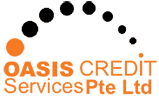Consumer borrowing trends in Singapore play an important role in shaping the economy and financial landscape of the nation. It is essential for individuals, and businesses to understand these trends to make informed decisions. This blog post deep dive into the importance of understanding consumer borrowing patterns in Singapore and highlights key insights for readers to understand the dynamic Singapore loan market.
Consumer borrowing patterns can be used to assess the general economic situation as well as the spending patterns. This information is important for consumers to make wise financial decisions, politicians for creating regulations that support financial wellbeing.
In this blog post, readers can expect to explore the current consumer borrowing landscape in Singapore, factors influencing borrowing behavior and understand the impact of borrowing trends on the economy.
Overview of Singapore loan Market
Singapore’s loan market reflects the diverse financial needs of its population and the country’s strong economy. As one of Asia’s leading financial hubs, Singapore offers a wide range of borrowing options to consumers, facilitated by both traditional financial institutions and innovative fintech companies.
Current State of the Loan Market
The loan market in Singapore is characterized by a mix of traditional and modern lending practices. Traditional banks play an important role in providing various types of loans, including personal loans, home loans, car loans, and credit cards. These banks, such as DBS Bank, OCBC Bank have long been pillars of Singapore’s financial sector, offering stability and reliability to borrowers.
In recent years, however, the loan market has witnessed the emergence of alternative lending platforms and fintech companies, offering innovative solutions to meet the evolving needs of consumers. Peer-to-peer lending has gained popularity, providing individuals and small businesses with access to financing outside of traditional banking channels.
Key Players
Traditional Banks: Established banks like DBS Bank, OCBC Bank, and UOB dominate the loan market in Singapore. They offer a wide range of loan products customized to different consumer needs, backed by their extensive branch networks and digital banking platforms.
Money Lenders: They streamline the lending process and offer more accessible and flexible financing options. These include business loans, emergency loans, wedding loans.
Government Agencies: Singapore’s government plays an active role in supporting small and medium-sized enterprises (SMEs) through initiatives like the Enterprise Financing Scheme and the SME Working Capital Loan.
Types of Loans Available to Consumers
Personal Loans: Personal loans are unsecured loans offered by banks and other financial institutions to individuals for various purposes, such as debt consolidation, home renovations, or emergencies. They typically have fixed or variable interest rates and flexible repayment terms.
Home Loans: Home loans, also known as mortgages, are used to finance the purchase of residential properties in Singapore. Banks and financial institutions offer home loan packages with different interest rate structures, such as fixed-rate, floating-rate, or hybrid options.
Car Loans: Car loans enable individuals to purchase vehicles by providing financing for the purchase price. Banks and car dealerships offer car loan packages with competitive interest rates and repayment options.
Credit Cards: Credit cards are widely used in Singapore for everyday purchases and expenses. They allow cardholders to borrow funds up to a predetermined credit limit and repay the balance either in full or through monthly installments.
Business Loans: SMEs and entrepreneurs can access business loans to fund their operations, expand their businesses, or invest in new projects. These loans may be secured or unsecured and are available from banks, government agencies, and alternative lenders.
Get Your Loan Approval Within Hours
Traditional vs. Modern Borrowing Practices
Traditionally, consumers relied heavily on established financial institutions such as banks for their borrowing needs. Bank loans and credit cards were the primary means through which individuals accessed credit. However, in recent years, we’ve witnessed a significant shift towards modern borrowing practices, driven by technological advancements and changing consumer preferences.
Traditional Borrowing Practices:
Bank Loans: Bank loans have long been a cornerstone of borrowing in Singapore. Whether it’s a personal loan for unexpected expenses, a home loan for property purchase, or a business loan for entrepreneurial ventures, banks have been the go-to source for credit. These loans typically involve a formal application process, stringent eligibility criteria, and may require collateral.
Credit Cards: Credit cards have become ubiquitous in Singapore, offering consumers a convenient way to access credit for everyday purchases, travel expenses, and emergencies. With features like cashback rewards, travel perks, and installment plans, credit cards have been a popular choice among Singaporeans for decades.
Modern Borrowing Practices:
Peer-to-Peer (P2P) Lending: Peer-to-peer lending platforms have emerged as an alternative to traditional banking channels. These platforms connect individual borrowers directly with investors willing to fund their loans. P2P lending offers borrowers more flexibility, potentially lower interest rates, and faster approval times compared to traditional bank loans. It also provides investors with an opportunity to diversify their investment portfolio and earn competitive returns.
Online Lending Platforms: licensed money lenders leverage technology to streamline the borrowing process and cater to the needs of tech-savvy consumers. These platforms often utilize data analytics, artificial intelligence, and machine learning algorithms to assess creditworthiness and offer personalized loan products. With features like online applications, instant approvals, digital lending platforms appeal to borrowers seeking convenience and efficiency.
Factors Driving the Shift:
Several factors have contributed to the growing popularity of modern borrowing practices in Singapore:
Technological Advancements: The proliferation of smartphones, internet connectivity, and digital infrastructure has empowered consumers to explore alternative borrowing options beyond traditional banks. Digital platforms offer a seamless and user-friendly experience, attracting tech-savvy individuals accustomed to digital convenience.
Changing Consumer Preferences: Gen Z consumers, who prioritize convenience, transparency, and personalized experiences, are driving the demand for modern borrowing solutions. They seek flexibility, competitive rates, and innovative features that traditional banks may struggle to provide.
Access to Credit: For some segments of the population, especially those with limited credit history or unconventional financial backgrounds, traditional banks may pose barriers to accessing credit. Modern borrowing platforms, with their data-driven approach and willingness to consider alternative factors for credit assessment, offer a lifeline to underserved borrowers.
Challenges and Opportunities in Singapore’s Loan Market
Challenges Faced by Consumers:
Limited Access to Credit: Some consumers in Singapore may face challenges in accessing credit due to stringent eligibility criteria set by traditional lenders, such as banks. This can be particularly difficult for individuals with limited credit history or irregular income streams.
High Debt Levels: Rising living costs and easy access to credit can lead to high levels of debt among consumers. Managing multiple loans or credit card balances can become overwhelming, especially if borrowers do not have a clear understanding of their financial obligations.
Unfavorable Terms and Conditions: Consumers may encounter unfavorable terms and conditions when borrowing from certain lenders, such as high interest rates, hidden fees, or inflexible repayment schedules. These conditions can exacerbate financial stress and make it challenging for borrowers to repay their debts.
Lack of Financial Literacy: Many consumers in Singapore may lack basic financial literacy skills, which can hinder their ability to make informed borrowing decisions. Without a clear understanding of interest rates, loan terms, and debt management strategies, individuals may fall into debt traps or make poor financial choices.
Opportunities for Lenders:
Innovative Lending Products: Lenders have the opportunity to develop innovative lending products that cater to the evolving needs of consumers. This could include flexible repayment options, personalized loan packages, or digital lending platforms that streamline the borrowing process.
Fintech Solutions: The rise of financial technology (fintech) presents opportunities for lenders to leverage technology to improve the borrowing experience. Fintech solutions such as peer-to-peer lending platforms, digital wallets, and credit scoring algorithms can help lenders reach a broader range of consumers and offer more tailored lending solutions.
Financial Education Initiatives: Lenders can play a proactive role in promoting financial literacy and responsible borrowing practices among consumers. This could involve offering educational resources, workshops, or online tools to help borrowers make informed decisions about managing their finances and debt.
Conclusion
As highlighted throughout this blog post, understanding these trends is crucial for consumers to make informed decisions about their finances. Whether you’re considering a traditional bank loan or exploring alternative lending options, staying informed about the latest developments can help you secure the best possible terms.
We’re here to support you every step of the way. Stay tuned to our website for more insights and resources on personal finance, and don’t hesitate to reach out to our team for personalized financial help.

